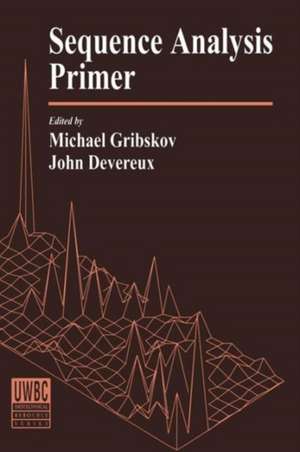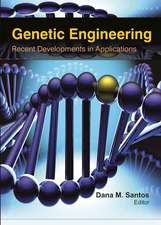Sequence Analysis Primer
Autor Michael Gribskov, John Devereuxen Limba Engleză Paperback – iun 1991
| Toate formatele și edițiile | Preț | Express |
|---|---|---|
| Paperback (2) | 284.03 lei 6-8 săpt. | |
| Palgrave Macmillan UK – iun 1991 | 284.03 lei 6-8 săpt. | |
| Oxford University Press – 14 sep 1995 | 728.50 lei 31-37 zile |
Preț: 284.03 lei
Nou
Puncte Express: 426
Preț estimativ în valută:
54.35€ • 56.90$ • 44.97£
54.35€ • 56.90$ • 44.97£
Carte tipărită la comandă
Livrare economică 05-19 aprilie
Preluare comenzi: 021 569.72.76
Specificații
ISBN-13: 9780333550922
ISBN-10: 0333550927
Pagini: 279
Ilustrații: XV, 279 p.
Dimensiuni: 152 x 229 x 17 mm
Greutate: 0.44 kg
Ediția:1991
Editura: Palgrave Macmillan UK
Colecția Palgrave Macmillan
Locul publicării:London, United Kingdom
ISBN-10: 0333550927
Pagini: 279
Ilustrații: XV, 279 p.
Dimensiuni: 152 x 229 x 17 mm
Greutate: 0.44 kg
Ediția:1991
Editura: Palgrave Macmillan UK
Colecția Palgrave Macmillan
Locul publicării:London, United Kingdom
Cuprins
Identification of genetic control elements, coding regions and RNA slice sites; stem loop structures; codon usage and gene expression prediction; DNA sequencing project management; determination of protein secondary structure and transmembrane segments; location of structural and sequence motifs; dot matrix methods; fast methods.
Descriere
Descriere de la o altă ediție sau format:
Computerized sequence analysis is an integral part of biotechnological research, yet many biologists have received no formal training in this important technology. Sequence Analysis Primer offers the necessary background to enter this exploding field and helps more seasoned researchers to fine-tune their approach. Compatible with most sequence analysis programs, the primer covers basic data manipulation, and offers valuable advice for overcoming common problems. A detailed example giving steps for characterizing a new gene sequence provides users with "hands-on" experience when combined with their current software.
Computerized sequence analysis is an integral part of biotechnological research, yet many biologists have received no formal training in this important technology. Sequence Analysis Primer offers the necessary background to enter this exploding field and helps more seasoned researchers to fine-tune their approach. Compatible with most sequence analysis programs, the primer covers basic data manipulation, and offers valuable advice for overcoming common problems. A detailed example giving steps for characterizing a new gene sequence provides users with "hands-on" experience when combined with their current software.





















